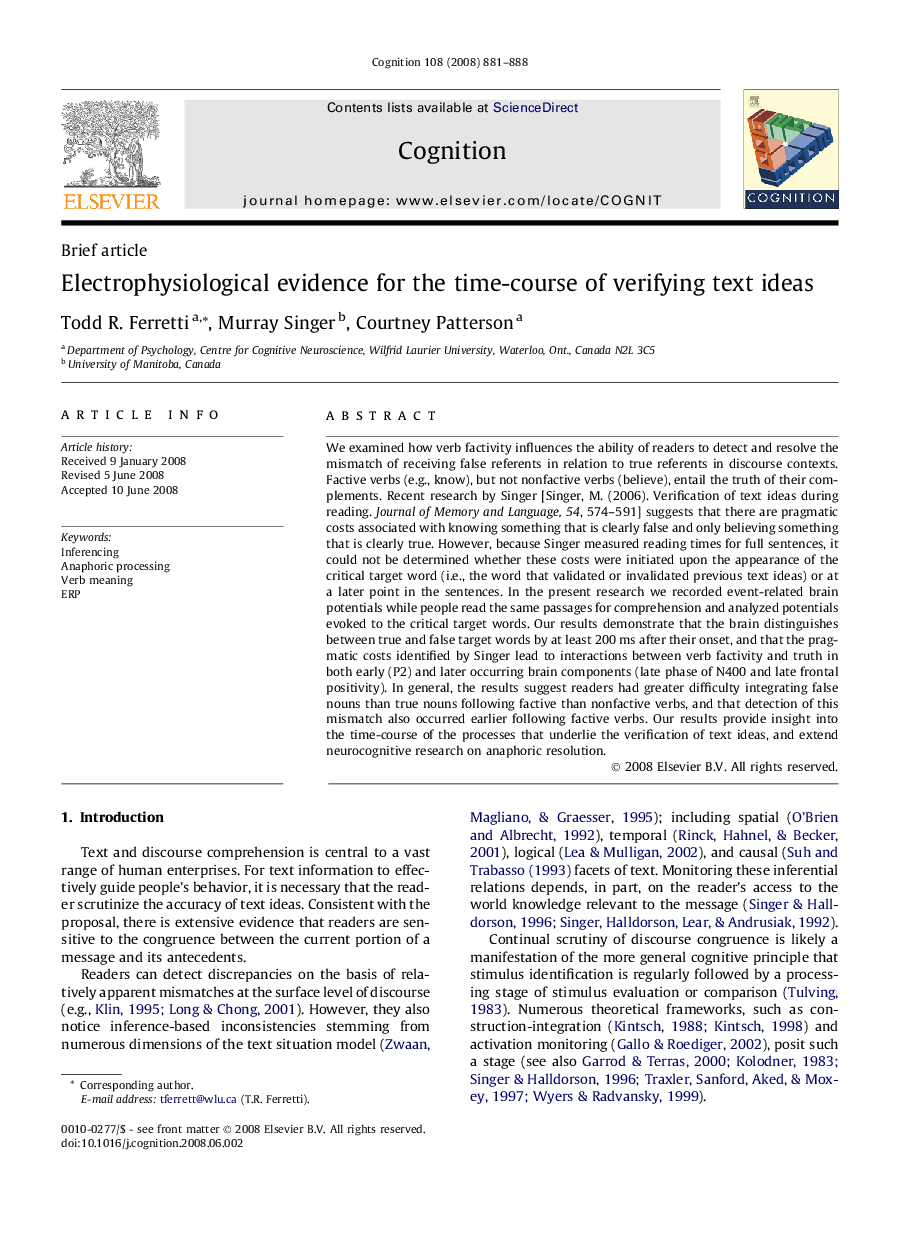| Article ID | Journal | Published Year | Pages | File Type |
|---|---|---|---|---|
| 927330 | Cognition | 2008 | 8 Pages |
We examined how verb factivity influences the ability of readers to detect and resolve the mismatch of receiving false referents in relation to true referents in discourse contexts. Factive verbs (e.g., know), but not nonfactive verbs (believe), entail the truth of their complements. Recent research by Singer [Singer, M. (2006). Verification of text ideas during reading. Journal of Memory and Language, 54, 574–591] suggests that there are pragmatic costs associated with knowing something that is clearly false and only believing something that is clearly true. However, because Singer measured reading times for full sentences, it could not be determined whether these costs were initiated upon the appearance of the critical target word (i.e., the word that validated or invalidated previous text ideas) or at a later point in the sentences. In the present research we recorded event-related brain potentials while people read the same passages for comprehension and analyzed potentials evoked to the critical target words. Our results demonstrate that the brain distinguishes between true and false target words by at least 200 ms after their onset, and that the pragmatic costs identified by Singer lead to interactions between verb factivity and truth in both early (P2) and later occurring brain components (late phase of N400 and late frontal positivity). In general, the results suggest readers had greater difficulty integrating false nouns than true nouns following factive than nonfactive verbs, and that detection of this mismatch also occurred earlier following factive verbs. Our results provide insight into the time-course of the processes that underlie the verification of text ideas, and extend neurocognitive research on anaphoric resolution.
